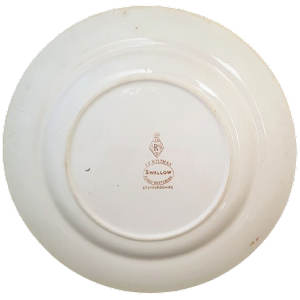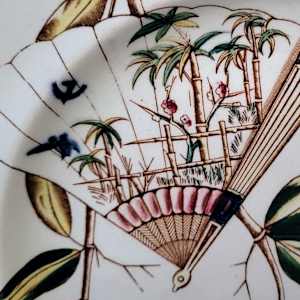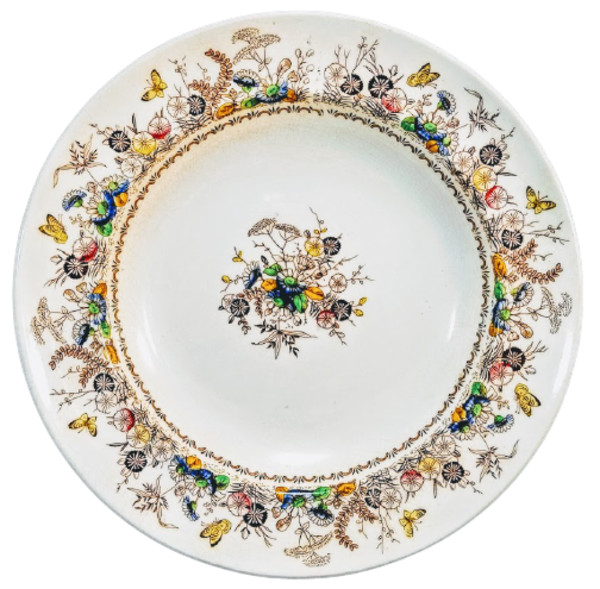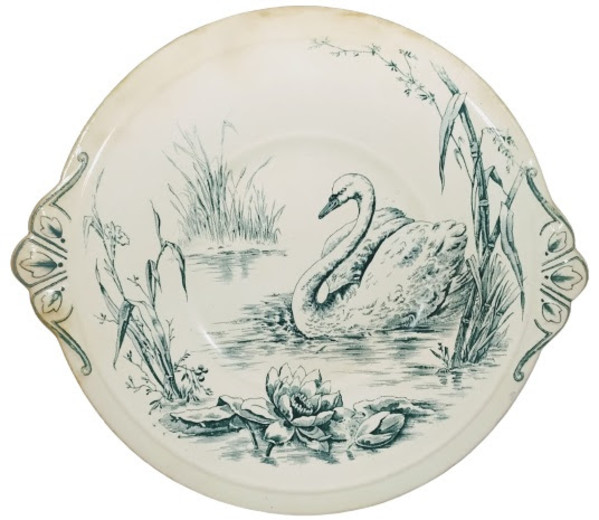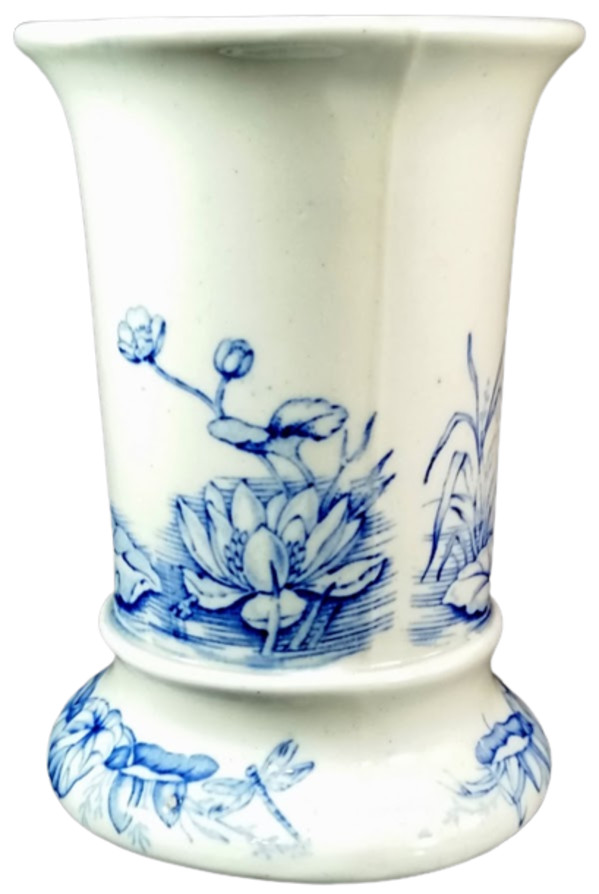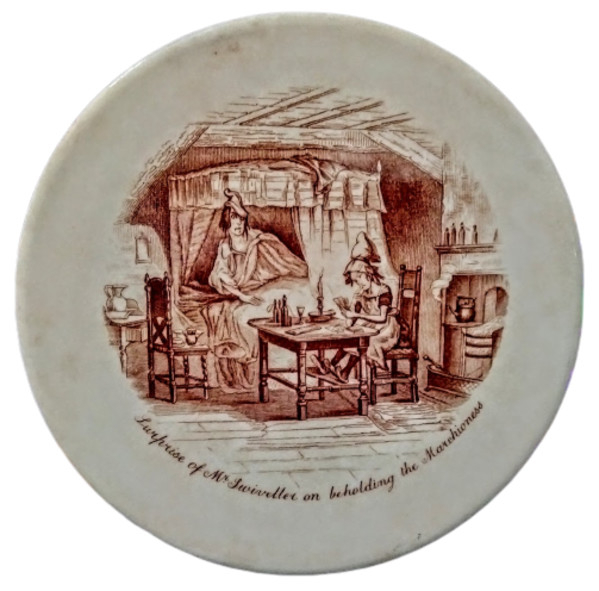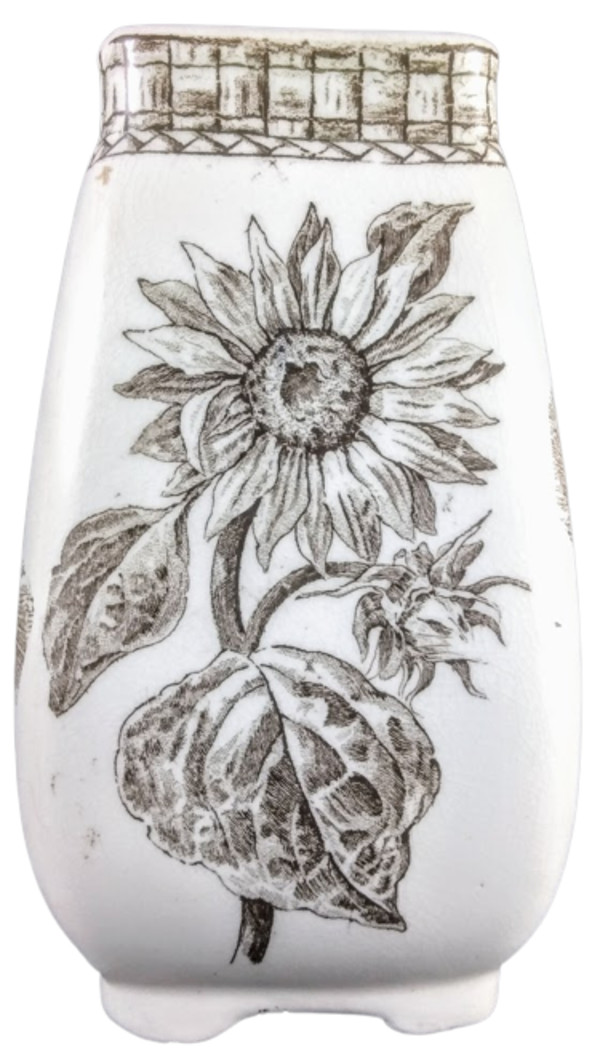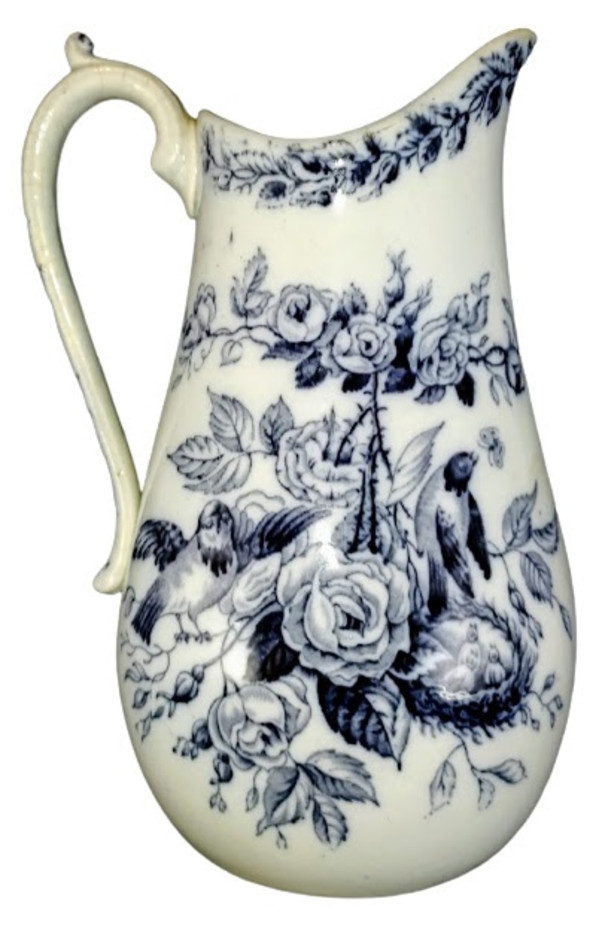- J. F. Wileman
- Swallow, Rd. 23 April 1881
- Earthenware
- 9.5 x 9.5 in (24.13 x 24.13 cm)
-
Not For Sale
Plate, 9.5 inches diameter. Brown transfer with polychrome clobbering. Printed maker's mark for J. F. Wileman. The registry diamond indicates a pattern registration date of 23 April 1881. This pattern features a large folding fan cartouche featuring a scene of a bamboo fence in front of growing bamboo and a branch of prunus blossoms, with swallows in flight above. The fan cartouche is laid over a large, leafy bamboo branch, with a smaller motif of bamboo and prunus blossoms below. The thin border consists of repeated, overlapping diamonds filled with circles and dots.
The Foley Potteries took their name from the Foley family who owned property in the neighborhood. They were built by John Smith of Fenton Hall about 1820. The first firm to work the potteries was Elkin, Knight & Bridgwood. On the retirement of the latter, the style was changed to Knight & Elkin and subsequently (on the retirement of Mr. Elkin) to J. K. Knight alone, until 1853, when he was joined in partnership by the late Henry Wileman, wholesale china dealer, of London, the style being Knight and Wileman. On the retirement of Mr. Knight until his death in 1856, Mr. Wileman carried on the works alone until 1864, when his two sons succeeded him as J. & C. Wileman. In 1866 the partnership was dissolved, and from that time the business belonged to James F. Wileman. The goods produced were the usual granite ware, printed wares, lusters, Egyptian and shining black, and cream-colored wares. All of these were of the ordinary classes for household use and the great bulk of the trade was exported to the States, Panama, Australia, South Africa, Ceylon, Java, and India. The firm of Wileman & Co. was in business at the Foley Pottery, Fenton, Staffordshire from c. 1892 to 1925, when they were renamed Shelley.
- Subject Matter: Aesthetic (Cartouche)
- Collections: Aesthetic Transferware, J. F. Wileman

